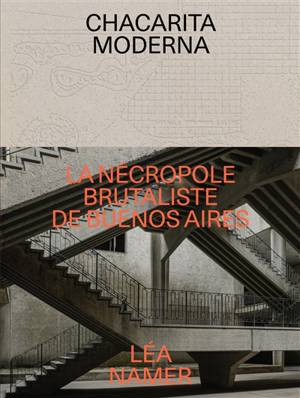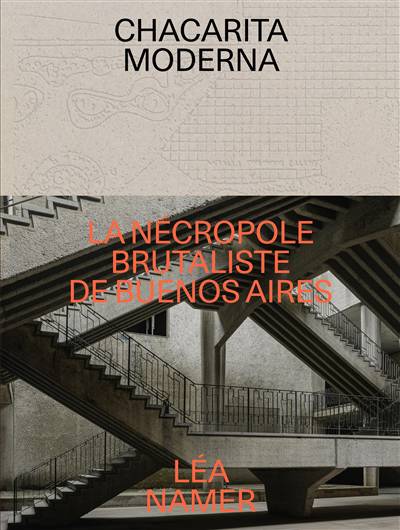
- Afhalen na 1 uur in een winkel met voorraad
- Gratis thuislevering in België vanaf € 30
- Ruim aanbod met 7 miljoen producten
- Afhalen na 1 uur in een winkel met voorraad
- Gratis thuislevering in België vanaf € 30
- Ruim aanbod met 7 miljoen producten
Chacarita Moderna
la nécropole brutaliste de Buenos Aires
Léa Namer, Federico CairoliOmschrijving
Chacarita moderna
En 1949, alors que l'Argentine figure parmi les plus puissants pays du monde, la ville de Buenos Aires lance la construction du Sexto Panteón, une nécropole souterraine de 150 000 sépultures. Ce monumental cimetière de style brutaliste, qui est la première et la plus vaste expérimentation d'architecture moderne appliquée au domaine funéraire, reste néanmoins méconnu.
Ítala Fulvia Villa (1913-1991), son architecte oubliée, fut l'une des premières femmes architectes et urbanistes d'Argentine. Pionnière du modernisme sud-américain, elle contribua notamment à l'élaboration du plan directeur pour Buenos Aires de Le Corbusier.
Soixante ans plus tard, l'architecte française Léa Namer découvre le Sexto Panteón et fait resurgir le nom de sa conceptrice à travers une longue enquête sur ce cimetière unique en son genre. Ce livre est une réflexion sensible et engagée sur l'héritage d'une utopie moderne ainsi qu'une relecture féministe de l'histoire.
In 1949, at a time when Argentina was one of the most powerful countries in the world, the city of Buenos Aires launched the construction of the Sexto Panteón, an underground necropolis containing 150,000 burial plots. This monumental Brutalist-style cemetery is the first and largest experimentation of modern architecture applied to the funerary field, and yet it remains unknown.
Ítala Fulvia Villa (1913-1991), the project's forgotten architect, was one of Argentina's first female architects and urban planners. As a pioneer of South-American modernism, she contributed to Le Corbusier's Master Plan for Buenos Aires.
Sixty years later, the French architect Léa Namer discovers the Sexto Panteón and resurrects the name of its creator, carrying out an in-depth investigation of this unique modern cemetery. This book is a thoughtful and engaging reflection on the legacy of a modern utopia, as well as a feminist re-reading of history.
Specificaties
Betrokkenen
- Auteur(s):
- Uitgeverij:
Inhoud
- Aantal bladzijden:
- 222
- Taal:
- Frans
Eigenschappen
- Productcode (EAN):
- 9782492680199
- Verschijningsdatum:
- 15/06/2024
- Uitvoering:
- Paperback
- Afmetingen:
- 220 mm x 290 mm
- Gewicht:
- 200 g

Alleen bij Standaard Boekhandel
Beoordelingen
We publiceren alleen reviews die voldoen aan de voorwaarden voor reviews. Bekijk onze voorwaarden voor reviews.











